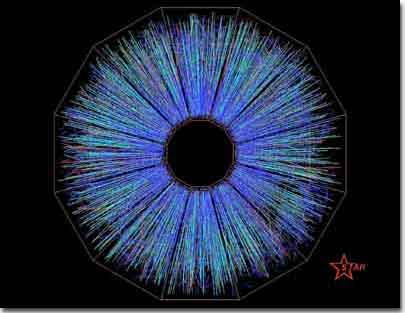Smashing Ions

This view shows the tracks left by approximately 1000 charged particles after a head-on collision between two gold nuclei in the STAR detector. Photo courtesy of STAR Collaboration
Brookhaven National Laboratory's new Relativistic Heavy Ion Collider (RHIC) smashes two high-energy beams of gold nuclei together head-on, in an attempt to create a state of matter, called quark-gluon plasma, that last existed only ten millionths of a second after the Big Bang. The STAR detector is one of five experiments at RHIC designed to study these collisions. The image above shows the tracks left by the charged particles that spray outwards from the collision at the center of the detector.











